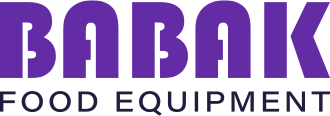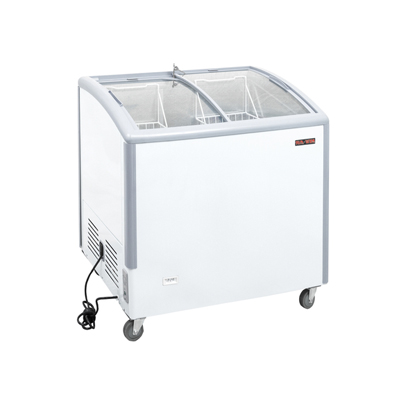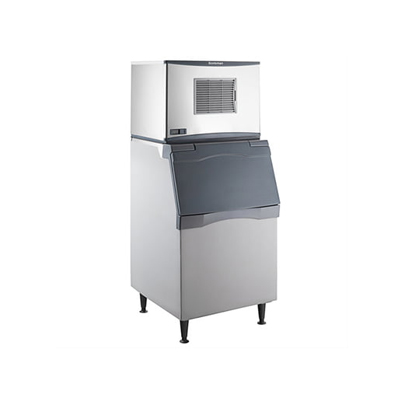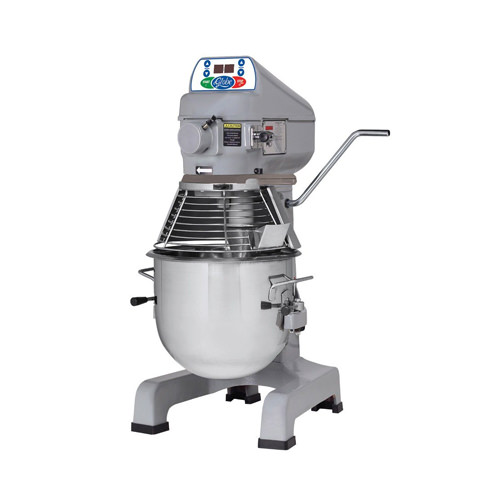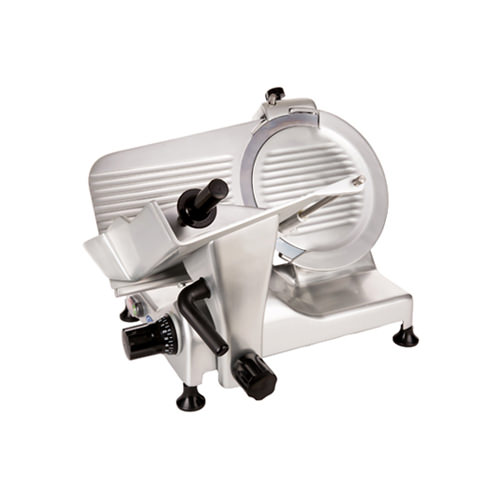Commercial Kitchen Cost: A Comprehensive Guide

Did you know that setting up a commercial kitchen can cost anywhere from $15,000 to over $100,000? This significant investment underscores the importance of understanding the factors that impact your startup cost. For restaurant owners and managers, grasping these expenses is crucial for long-term success.
A commercial kitchen is more than just a space; it’s the heart of your hospitality business. Unlike a residential kitchen, it requires heavy-duty equipment, proper ventilation, and adherence to health and safety standards. These factors not only ensure efficiency but also protect your customers and staff.
This guide serves as your all-inclusive resource, covering every aspect of commercial kitchen cost. From equipment and layout to budgeting and permits, we’ve got you covered. Our expert advice and real-world examples will help you navigate the complexities of setting up your kitchen with confidence.
Whether you’re planning a small café or a large restaurant, trusted partners like Babak Food Equipment (604-566-9747) can provide the support you need. Their expertise in kitchen setup ensures you make informed decisions every step of the way.
By the end of this guide, you’ll have a clear understanding of what influences your startup cost and how to budget effectively. Let’s dive in and explore the essential elements that will help you create a thriving commercial kitchen.
Introduction to Commercial Kitchen Cost
Understanding the financial aspects of setting up a commercial kitchen is essential for any restaurant owner or manager. A commercial kitchen is far more complex than a residential one, often described as a professional laboratory designed for heavy-duty cooking and high efficiency.
What Defines a Commercial Kitchen?
A commercial kitchen is built to handle large-scale food preparation, serving hundreds or even thousands of diners daily. It features specialized equipment like convection ovens and industrial-grade appliances, which are essential for maintaining efficiency and consistency. The design emphasizes workflow optimization, with careful placement of equipment to minimize movement and maximize productivity.
The layout is typically divided into stations or zones, each with a specific function, such as cooking, prep work, and dishwashing. This structured approach ensures that the kitchen operates smoothly, even during peak hours.
An Overview of Key Expenses
When planning a commercial kitchen, several expenses come into play. Equipment costs are a significant portion, ranging from ovens and stoves to refrigerators and dishwashers. Permits and licenses are another major expense, as they ensure compliance with health and safety regulations.
Renovations and design also contribute to the overall cost. Hiring professional designers to create an efficient layout can be costly but is crucial for long-term efficiency. Additionally, regular maintenance and energy-efficient practices are necessary to manage operational costs effectively.
Proper planning can help reduce unforeseen expenses. Working with experts like Babak Food Equipment (604-566-9747) can provide valuable insights and support, ensuring that your kitchen is set up with the right equipment and layout from the start.
Understanding Key Cost Components
When planning a business venture in the food industry, understanding the key cost components is crucial for success. Two major areas that demand attention are equipment expenses and construction or renovation costs. These elements significantly influence your overall setup and operational efficiency.
Kitchen Equipment Expenses
Equipment forms a substantial part of your budget. Industrial ovens, refrigerators, and specialty appliances are essential for daily operations. According to experts, new equipment can range from $100,000 to $300,000, while used options may offer savings but require careful evaluation. Detailed cost analyses reveal that smallwares and specific equipment can add up quickly, making research and planning vital.
Construction and Renovation Considerations
Physical setup costs, including layout design and infrastructure, are equally important. A well-designed space enhances workflow and efficiency. As one industry expert noted, “A functional layout is not just an expense; it’s an investment in your business’s productivity.” Renovation costs can vary widely, so understanding local building codes and permit requirements is essential for accurate budgeting.
| Equipment Type | New Equipment Pros | Used Equipment Pros |
|---|---|---|
| Industrial Ovens | Higher efficiency, warranties, customization | Lower upfront cost, shorter lead time |
| Refrigerators | Energy efficiency, latest features | Cost-effective, immediate availability |
| Specialty Appliances | Specific functions, durability | Budget-friendly, tested performance |
Understanding these components helps in making informed decisions. For more insights on equipment costs and setup, visit Babak Food Equipment. By carefully evaluating equipment and construction needs, you can create a budget that supports your business goals effectively.

Factors Affecting Your Commercial Kitchen Cost
When planning your commercial kitchen setup, several factors influence the overall expense. Understanding these elements can help you budget effectively and make informed decisions.
Impact of Location and Space Size
Your location plays a significant role in determining costs. Urban areas typically have higher rents and utility rates compared to rural settings. For instance, a commercial kitchen in a bustling city like Toronto may cost more due to higher demand and limited space. In contrast, rural areas often offer lower rents but may require additional investments in utilities and transportation.
The size of your space is another critical factor. Larger areas increase construction and maintenance expenses. A smaller, well-organized space can be just as efficient, reducing long-term operational costs. Proper use of space ensures that your layout is both functional and cost-effective.
Permit, License, and Regulatory Fees
Permits and licenses are essential for compliance but can add to your expenses. These fees vary by region, so researching local regulations is crucial. For example, health department permits may be more stringent in urban areas, increasing costs. Ensuring you meet all requirements upfront can prevent unexpected fees down the line.
| Location Type | Urban | Rural |
|---|---|---|
| Rent/Lease Costs | Higher due to demand | Lower, more affordable |
| Utility Costs | Higher electricity rates | Lower utility expenses |
| Permits/Licenses | More stringent, higher fees | Less expensive, simpler process |
Considering these factors, thorough research and planning are key to managing your budget effectively. For more insights on optimizing your space and reducing costs, visit Babak Food Equipment.

Planning Your Commercial Kitchen Setup
Planning a restaurant setup involves more than just choosing equipment; it requires aligning your strategy with your business goals and operational needs. A well-planned setup ensures efficiency, safety, and profitability.
Assessing Business and Operational Needs
Start by evaluating your menu and customer expectations. This helps determine the necessary equipment and layout. For instance, a fine dining restaurant may need different appliances compared to a fast-food establishment.
Consider your staff, especially chefs, and their workflow. A logical layout minimizes movement, enhancing productivity. The size and layout of your space should support your operations without unnecessary expenses.
| Planning Aspect | Considerations |
|---|---|
| Equipment Selection | Choose based on menu requirements and staff expertise. |
| Space Utilization | Optimize layout for workflow efficiency and cost savings. |
| Budgeting | Allocate funds for equipment, permits, and unexpected expenses. |
Budgeting is crucial. Allocate funds for equipment, permits, and miscellaneous expenses. Investing in quality equipment may increase initial costs but offers long-term savings through efficiency and durability.
For expert guidance, consider consulting Babak Food Equipment. They can help you create a detailed plan that aligns with your business strategy and budget, ensuring a smooth setup process.

Designing an Efficient Kitchen Layout
When it comes to your restaurant’s success, the layout of your kitchen space plays a crucial role. A well-designed layout not only enhances productivity but also contributes to long-term cost savings. By optimizing your kitchen space, you can ensure that your team works efficiently, reducing wasted time and effort.
Optimizing Workflow and Equipment Placement
A key aspect of an efficient layout is the strategic placement of equipment. Positioning high-usage appliances, such as ovens and refrigerators, in areas that minimize movement can significantly improve workflow. For example, placing prep stations near cooking areas ensures that ingredients are easily accessible, reducing the need for frequent trips across the kitchen.
Investing in a well-planned layout is a smart investment for your business. It can lead to cost savings over time by reducing energy consumption and improving staff productivity. Moreover, a logical workflow design can enhance food quality by ensuring that each step of preparation is handled efficiently.
| Layout Aspect | Optimization Strategy |
|---|---|
| Equipment Placement | Position high-usage appliances to minimize movement and improve workflow. |
| Space Utilization | Maximize kitchen space with modular equipment and multi-functional stations. |
| Budget Allocation | Invest in energy-efficient appliances to reduce long-term operational costs. |
By carefully planning your kitchen space and equipment placement, you can create a setup that not only meets your current needs but also supports your business’s growth. This approach ensures that your investment in the layout yields both immediate and long-term benefits, contributing to the overall efficiency and profitability of your restaurant.
Equipment Selection and Installation Tips
Selecting the right equipment for your business is a critical step in setting up an efficient and profitable operation. Whether you’re starting fresh or upgrading your current setup, the choices you make can significantly impact your long-term success. Let’s explore how to make informed decisions that align with your operational needs and budget.
Choosing Quality and Energy-Efficient Equipment
When selecting equipment, prioritize quality and energy efficiency. High-efficiency appliances may have a higher upfront cost, but they offer long-term savings through reduced energy consumption. For instance, Energy Star® certified models can lower your utility bills over time. Consider your specific needs—whether it’s a convection oven for a bakery or a gas range for precise temperature control. Babak Food Equipment recommends evaluating equipment based on durability, functionality, and compliance with health standards.
Installation and Labor Considerations
Installation is another crucial aspect to consider. Proper installation ensures your equipment runs efficiently and safely. Hiring experienced professionals can prevent future issues, even if it means a higher initial labor cost. Schedule installations during off-peak times to minimize disruptions. Additionally, some equipment may require adjustments to your HVAC or exhaust systems, so plan accordingly to avoid unexpected expenses.

By focusing on quality, energy efficiency, and proper installation, you can create a setup that supports your business goals and minimizes waste. Partnering with experts like Babak Food Equipment ensures you make informed decisions every step of the way. Their guidance can help you navigate the complexities of equipment selection and installation, setting your business up for long-term success.
Budgeting for Your Restaurant or Commercial Kitchen
Creating a realistic financial plan is the cornerstone of any successful restaurant venture. Without a clear budget, you risk overlooking critical expenses that could strain your resources. Start by assessing your requirements, from the type of oven needed to regulatory fees, ensuring every aspect is accounted for.
Average startup costs in Canada range from $250,000 to $500,000, depending on the concept and location. Allocate 20-30% of your budget to equipment, as high-quality appliances like energy-efficient ovens can save money in the long run. Don’t forget permits and licenses, which vary by region but are essential for compliance.

Include a contingency fund of 10-20% to cover unexpected expenses. For detailed guidance on permits and regulations, visit Babak Food Equipment. Regular maintenance and energy-efficient practices can also reduce long-term costs.
Cost-Saving Tips for Your Kitchen Investment
Investing in a kitchen setup can be costly, but with the right strategies, you can save money without compromising on quality. Let’s explore practical tips to help you reduce expenses while maintaining high standards.
Buying Used versus Leasing Equipment
Deciding between used and leased equipment can significantly impact your budget. Used equipment offers lower upfront costs, while leasing provides access to the latest technology with manageable monthly payments. For example, a used oven might save you 30-50% in initial costs, whereas leasing ensures you always have up-to-date appliances.
| Option | Pros | Cons |
|---|---|---|
| Buying Used | Lower upfront cost, shorter lead time | Warranty may not be included, possible maintenance costs |
| Leasing | Predictable payments, access to new technology | No equity, potential long-term obligations |
Negotiating with Vendors for Better Deals
Timing your purchases and negotiating with vendors can lead to better prices. For instance, buying during off-peak seasons or bundling equipment purchases can result in discounts. As one industry expert noted, “Negotiation is about finding a win-win situation where both parties benefit.”
Researching market prices and reaching out to multiple suppliers can also uncover hidden opportunities. This approach ensures you get the best value for your investment while maintaining the quality of your equipment.
Commercial Kitchen Cost in Canada: A Detailed Look
Setting up a commercial kitchen in Canada involves a unique set of challenges and expenses. From local regulations to regional price variations, understanding these factors is key to budgeting effectively.
Local Regulations and Permit Requirements
In Canada, health permits and fire safety certifications are essential. These can add thousands to your startup expenses, varying by province. For instance, Ontario may have different requirements than British Columbia, impacting your budget.
Regional Price Variations and Market Trends
Urban areas like Toronto and Vancouver often see higher rents and labor costs. In contrast, rural areas may offer lower rents but require additional investments in utilities. Equipment prices also vary regionally, with cities typically having higher costs.
Current market trends in Canada include the rise of ghost kitchens and co-working spaces. These models offer lower startup costs, attracting entrepreneurs. For example, Calgary’s Culinary Coworking spaces provide affordable options for new ventures.
Consulting with local experts like Babak Food Equipment can help navigate these complexities. Their guidance ensures you make informed decisions, from permits to equipment choices, setting your business up for success.
Conclusion
Setting up a professional cooking space involves multiple factors, from equipment and layout to permits and health standards. This guide has covered the essential elements that influence your startup expenses and how careful planning can lead to long-term savings.
Your restaurant’s success heavily depends on the type and size of your setup, as well as local expense variations. Evaluating all available options, such as buying used equipment or leasing, can help you stay within budget while maintaining quality.
Working with experts like Babak Food Equipment can provide valuable insights and support. Their expertise ensures your space is functional and aligned with your business goals.
For personalized guidance, consider reaching out to Babak Food Equipment at 604-566-9747. Their team is ready to help you navigate the complexities of setting up your cooking space with confidence.
